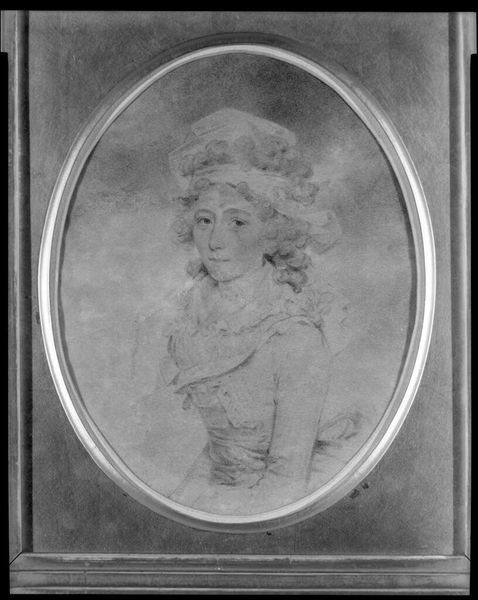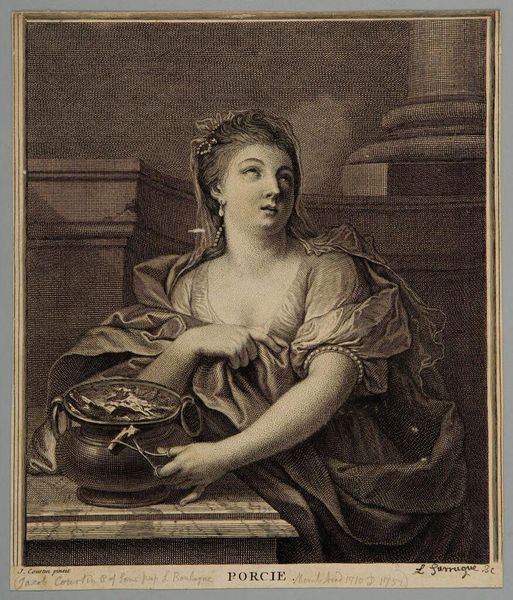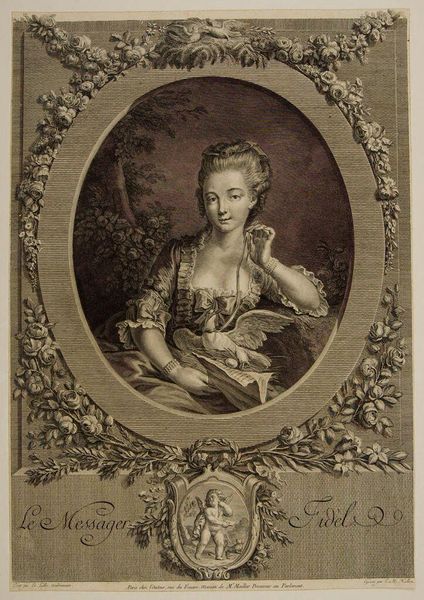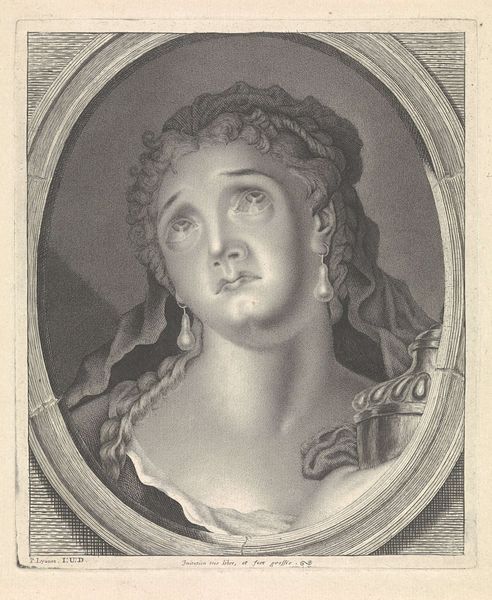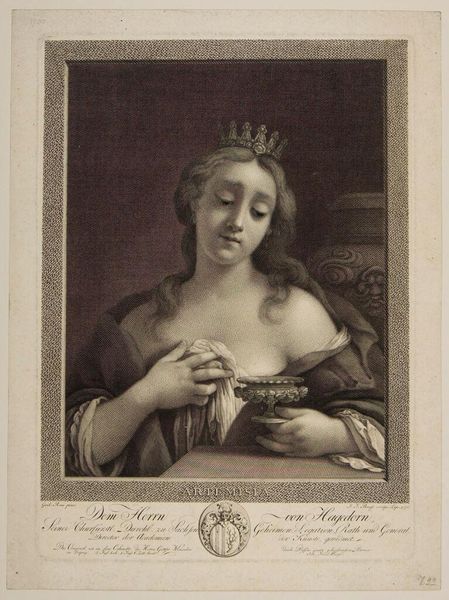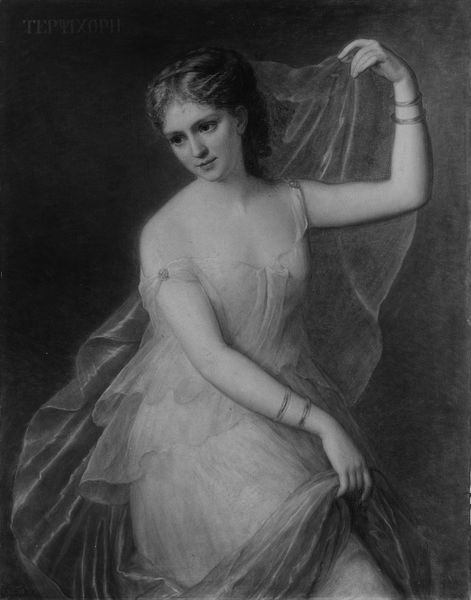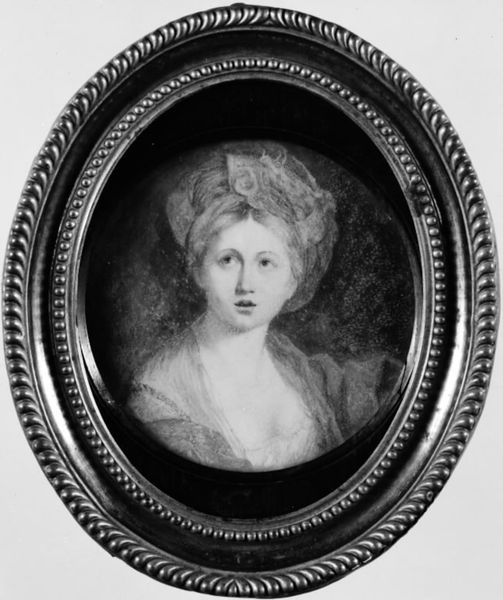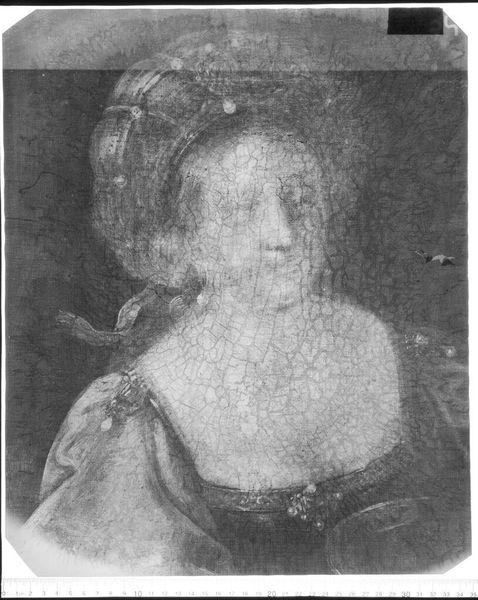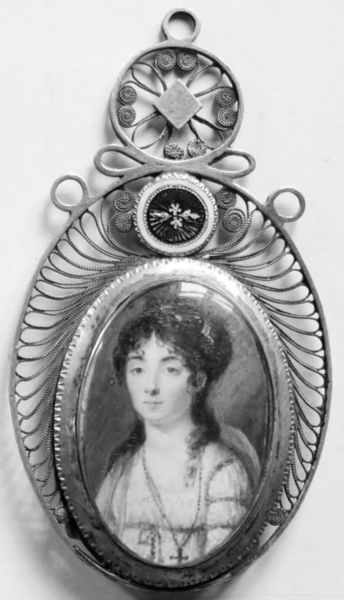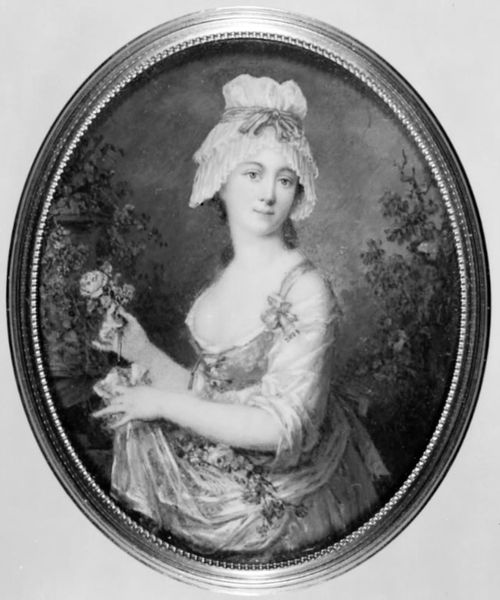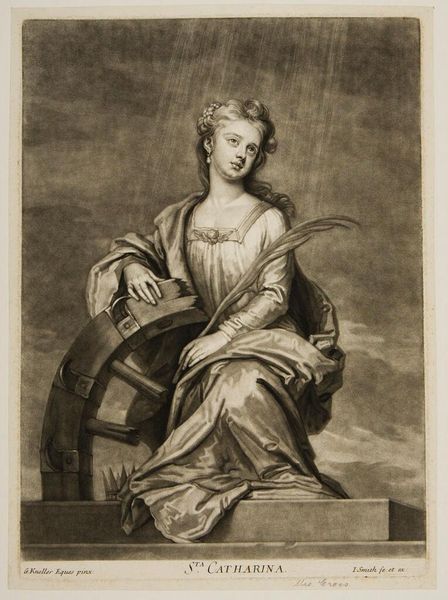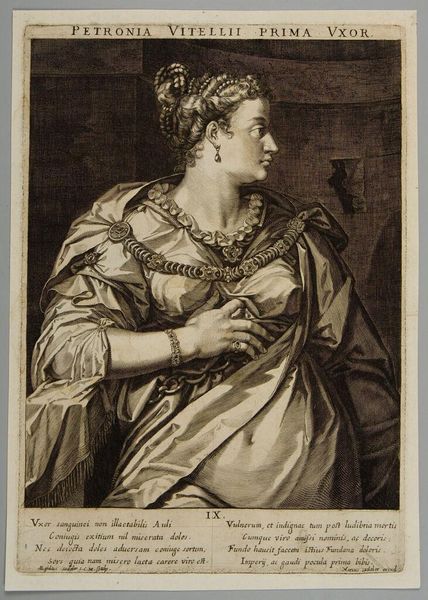
Dimensions: 2 7/8 x 2 1/4 in. (74 x 59 mm)
Copyright: Public Domain
Curator: This delicate drawing is “A Sea Nymph,” created between 1755 and 1765 by Carl Friedrich Thienpondt. Executed in graphite, it's an allegorical portrait rendered in monochrome. Editor: There's a softness to it, despite the starkness of the graphite. Her gaze is inviting, and there's a dreamlike quality to the dark background. The way light catches her shoulder is quite remarkable. Curator: Absolutely, the tonal range he achieves with graphite is stunning. I’m curious about the context of such works; drawings like these were commodities. Were they studies, models, or display pieces demonstrating wealth and taste? What labor went into its production? Editor: If you shift your focus away from the materials for a moment, consider the lines themselves. The way the curls are rendered, the soft modelling of the flesh – there's a conscious striving for ideal beauty that conforms to classical standards, even as it anticipates the Romantic period. Note the slight torsion of her body. Curator: Precisely, but how was beauty commodified? Was Thienpondt part of a workshop system churning out these pieces for aristocratic patrons eager to signal their cultivated taste? The frame too indicates wealth. Consider the mines that extracted metal. What narratives of class does that represent? Editor: The framing, though later, complements the rococo elements, the almost confectionary treatment of her hair and adornments. The composition leads your eye to her face and expression, conveying the thematic ideal of Romanticism through a Rococo sensibility. Curator: While aesthetics certainly play a crucial role, understanding how the nymph became an object requires acknowledging the economic machinery behind its production. Where were the materials sourced? How did artistic labor contribute to an emerging art market catering to status display? These aspects color the picture, literally. Editor: I would concede your points. Understanding these factors broadens appreciation for the historical period, but a discussion about materiality may miss something crucial: this woman’s arresting stare and what Thienpondt aimed to accomplish with tone and line. Curator: It seems to me we both appreciate "A Sea Nymph" differently. By investigating its cultural footprint, this exquisite study shows both artistic accomplishment as well as society itself, through the materiality of beauty. Editor: And by analyzing Thienpondt's deft technique, we come closer to grasping an idealized image. What he made of his materials becomes, ultimately, its own rewarding pursuit.
Comments
No comments
Be the first to comment and join the conversation on the ultimate creative platform.
